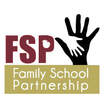Jennifer Hindel
|
I am a proud FSD 157c parent of two children, have been married for 18 years, and love living in Frankfort. Professionally, I have been the chief executive manager of an award-winning unit of local government for the last fifteen years. I am also a professional civil engineer (B.S. U of I Urbana-Champaign ‘95) and have served on the Village of Frankfort’s Operations Committee for six years. I enjoy travelling, history, and swimming, but spending time with family is far and away my greatest joy.
We all serve our community in different ways. By combining the perspective of a mother with strong, hands-on local government and problem-solving experience, I hope to provide unique and valuable support to the Board of Education, and help our outstanding District in putting children first. |
Questions | Answers
According to the Illinois Association of School Boards, one crucial characteristic of a school board member is the ability to represent the entire community and not special interest or partisan groups. What will you do to support the needs of the diverse population within our community?
Answering this question goes back to the fundamentals of governance. As a special unit of local government, a school district has exceptional authority to fulfill a relatively limited, but incredibly important, mission.
With this exceptional authority comes exceptional responsibility. Our community faithfully sends its money and entrusts its children to the District, and all are entitled to equal treatment. Accordingly, the District must vigilantly and humbly exercise its authority. In making a decision, a good board member asks: are we possibly exceeding our scope of authority? Will some community members reasonably take issue with this particular policy or issue position? If so, why? Is any segment of the student population or larger community neglected by taking this position? Only then can a board member judiciously proceed.
In this sense, neutrality is essential for proper governance of a school board, because it is the only way to serve the entire community. The alternative is incorrect but also harmful. If a school district board favors a particular special interest group or effectively works against another, some members of the community will vote for candidates not necessarily because they are the most capable of for the position, but rather because the candidate will reinforce or resist a particular partisan position of the group in power. The District becomes dysfunctional and harms the children and community.
How would you address the increasing concerns surrounding mental health and bullying within schools? Please be specific with changes you would like to see or additions you would recommend.
Bullying is a core component of the youth mental health discussion. Social media – which can extend beyond school authority to address – has amplified the problem to an at-times unbearable level.
The District’s bullying policy appears to take a strong stance, but in researching this topic, the community feedback I solicited suggests further discussion may be worth considering.
As requested, here are some apparent issues, along with potential District improvements that could address them. These are a starting point and certainly not comprehensive; further insights and education on the topic would likely cause these thoughts to evolve. As a board member, I would first ask the administration to prepare a ground-up review of the effectiveness of its bullying policy, including anonymous summaries of instances where administration believes the policy failed, and/or where a parent/guardian has stipulated that it has failed.
• Issue. According to student feedback, some are afraid to ‘tattle’. Some victims would rather accept the abuse than tell an adult because of fear of retaliation. Some are afraid to tell their parents out of a sense of shame.
Possible improvement. Provide physically discreet locations in schools for students to report bullying of themselves or other students. At the junior high level, keep the online bullying form in a prominent and easy-to-reach cyber location for ease of electronic access from a school laptop. Continue to reinforce to students that the school will continue pursuing a bullying issue until it is permanently resolved, in order to help reduce fear of retaliation.
• Issue. Some educators have observed parental disconnect regarding bullying. Some parents may feel that related in-school discipline of their bullying child is excessive, or that it is a problem that falls within the exclusive realm of the parent. Some parents simply don’t seem to see bullying as problematic.
Potential improvement. Increase and improve blanket, pre-emptive parental communication regarding the in-school consequences of bullying. Even parents who disagree with the policy, or who don’t think bullying is a problem, may nonetheless warn their child of the consequences, thus increasing deterrence. Increased Tiger University focus could also help educate parents, as described in another response below.
• Issue. A number of students questioned the effectiveness of Second Step and similar programs. One said: it is unrealistic to expect everyone to be friends and to like each other. Another said: The program presents unrealistic scenarios of problem resolution. And another: it is heartbreaking to see kids who are alone having to participate in the program when they know that it will have no impact, because it just makes them feel even more alone. Some students and educators feel that the anti-bullying curriculum would benefit from an update. The result of all this is that many students reject the program wholesale and miss its positive aspects.
Potential improvement. Some educators and students were enthusiastic about migrating to a program that focuses on respect and responsibility; decoupling the component of positivity from the program; and emphasizing positivity elsewhere and more generally. Some students suggested adopting the tone and approach of the DARE program, saying it feels more genuine: it gets straight to the point about what it is trying to accomplish, and behavioral tools are presented in a more realistic way.
• Issue. Social media is used as a weapon for students to conduct and amplify bullying. Social media can at times be a force for good, but among youth whose impulse control and character are not fully formed, it can be a mind-bending journey into isolation, deep insecurity and victimization. In addition to traditional “pile on” bullying, there can be exclusionary posting, and even extortionate sensitive information holding. A pediatric mental health therapist indicated that patients are often referred for her to due to social media issues. Several parents who banned social media for their children reported their children later thanking them for doing so. A recent study asked young teens whether they would be relieved if, somehow, social media could be eliminated from society altogether: the answer was a resounding yes. Overall, informal local polling suggests a split among parents as to whether and to what degree it is a problem.
Potential improvement. Mental issues associated with social media, and the internet in general, are issues over which the District has the least amount of ability to control or even detect. District policy appears to addresses the issue to the maximum extent legally allowable. However, without parental engagement on a larger and deeper level, improvement will be difficult. The District’s Tiger University series is excellent and seems to be well received by parents who attend them. While social media has been a Tiger U topic, focusing more frequently and more in-depth on social media bullying may be helpful. Perhaps child psychologists can present case studies of patients who have been impacted. Increased advertising of these events would also help, as some parents seem largely unaware of the negative implications of youth on social media.
Interestingly, multiple educators reported an interesting counterpoint observation to bullying: there appears to be a trend of fading resilience in an increasing percentage of children, where an exceptional sensitivity to treatment by others have faded the line between normal interaction and bullying. The result is that the child takes issue with behavior that would not reasonably be considered bullying. This is a conundrum that deserves further exploration. As with social media, it is uncertain how and to what degree the District can address this, but it certainly complicates the challenge of effectively addressing bullying.
Do you feel it is a conflict of interest to have financial investments with any companies that our district contracts with? Why or why not?
The District’s ethics policy may already address this, but I do feel that it is a conflict of interest. Further, regardless of policy, a board member should refrain from any appearance of impropriety in order to protect the integrity of the District.

